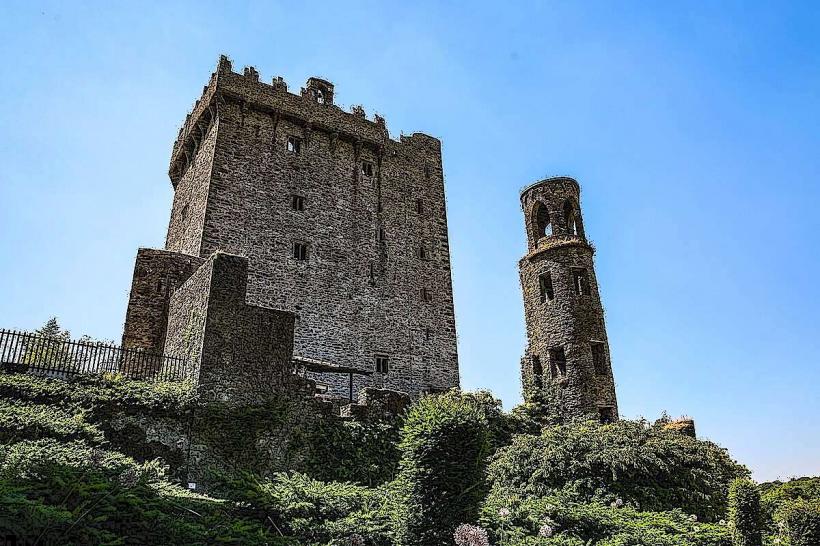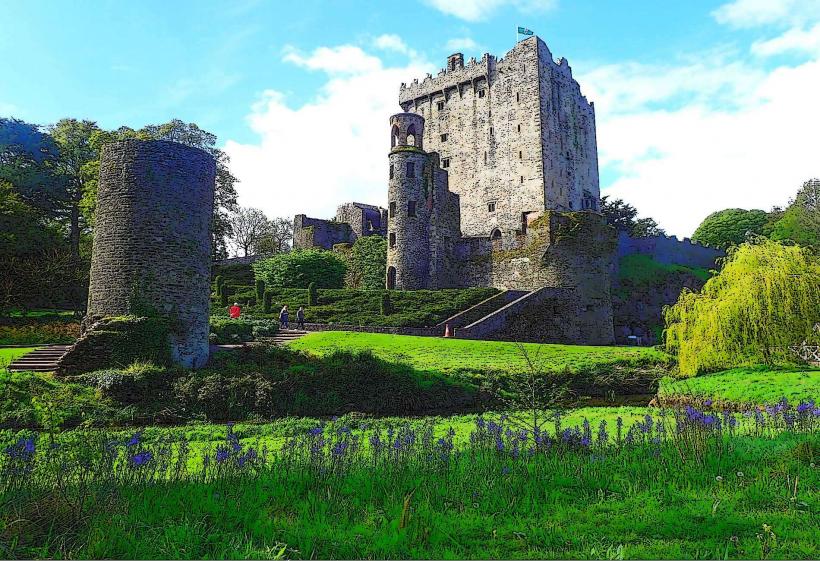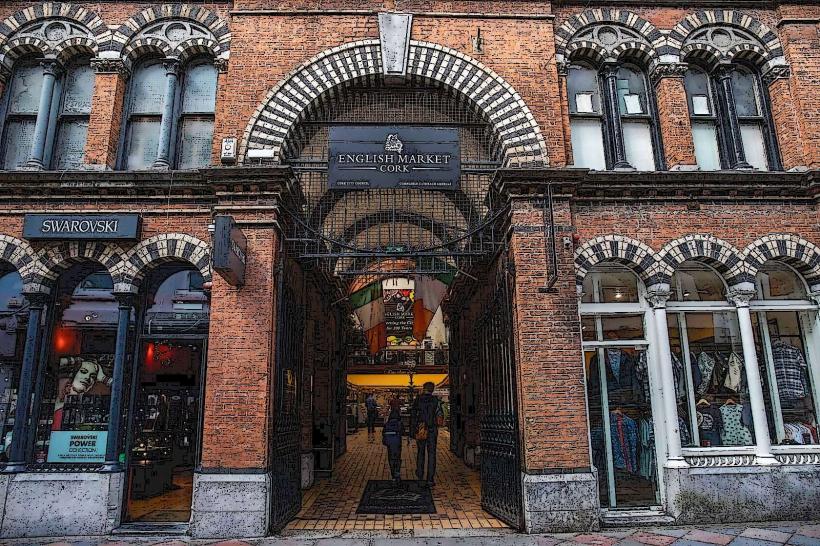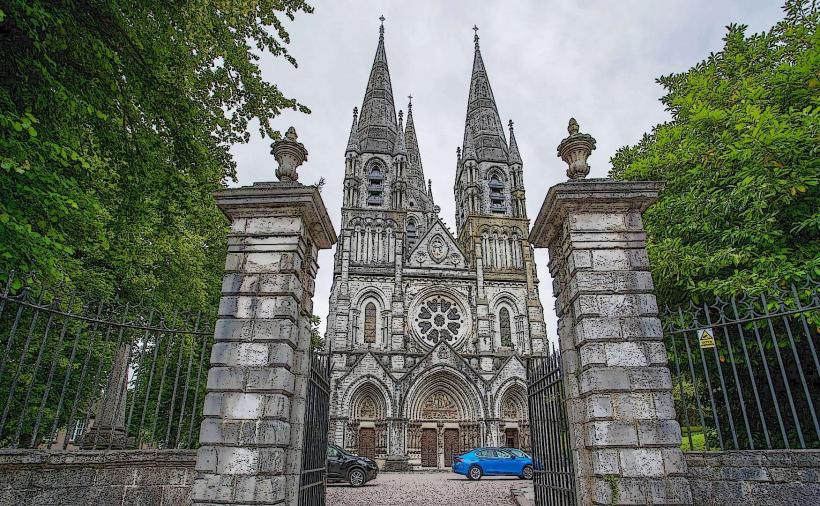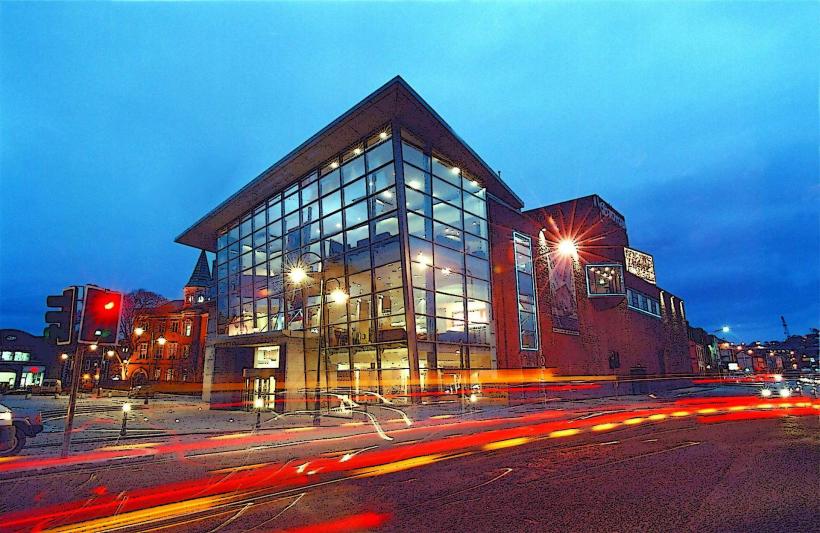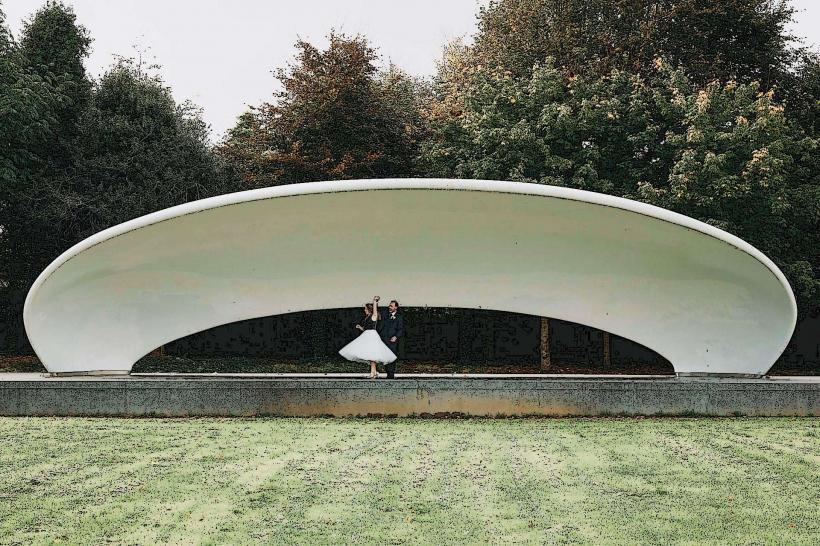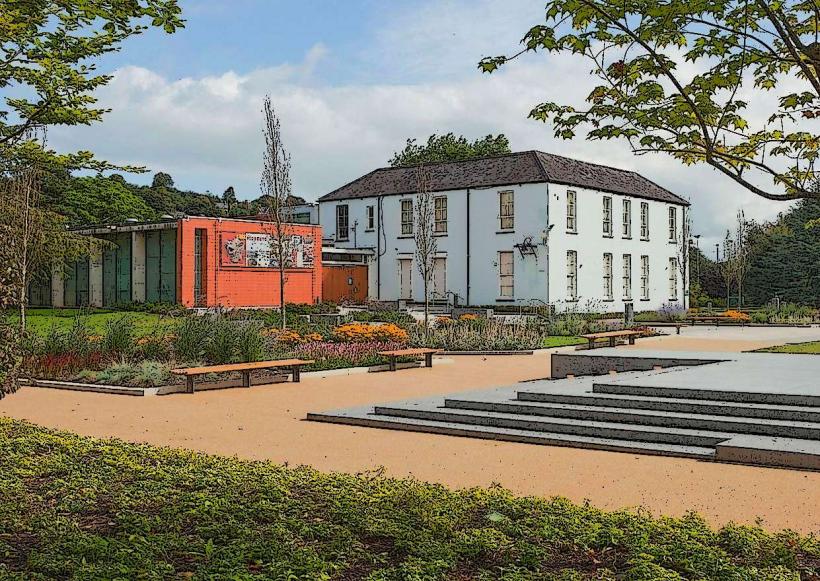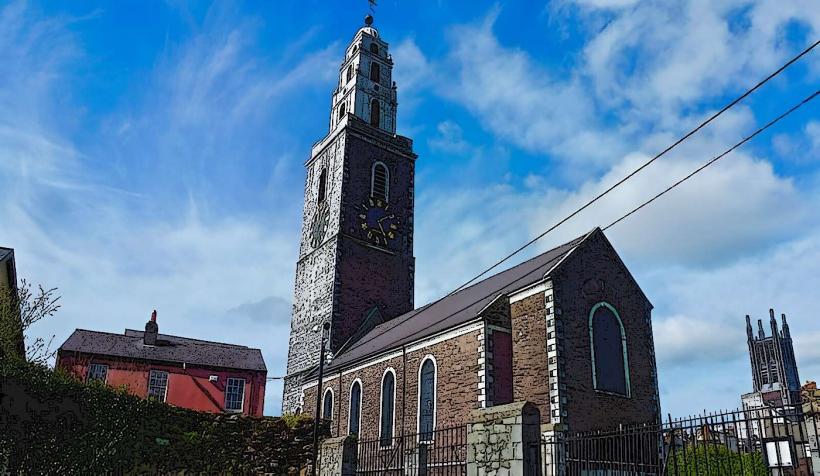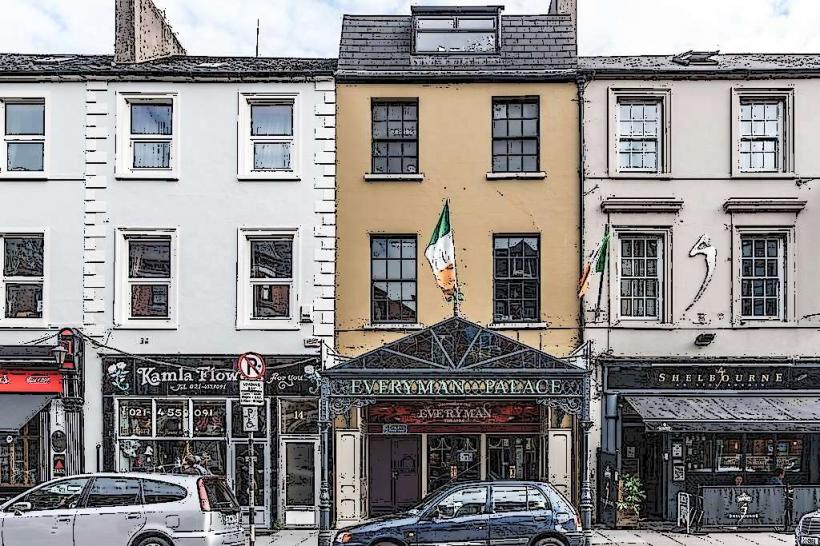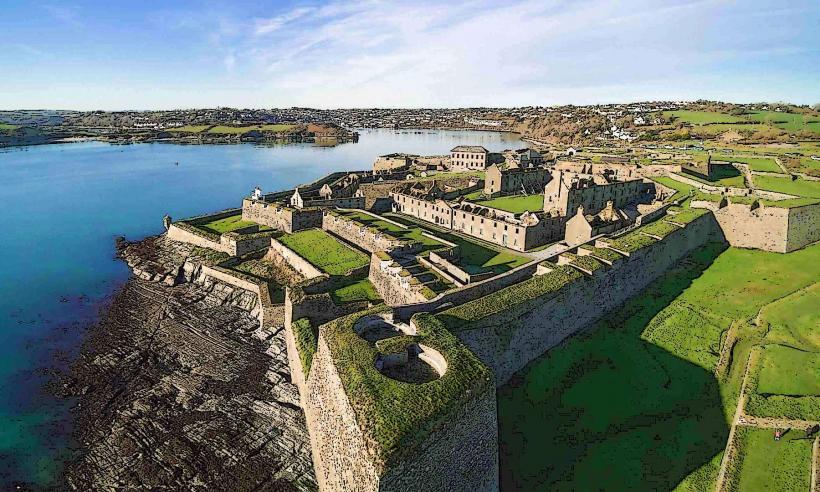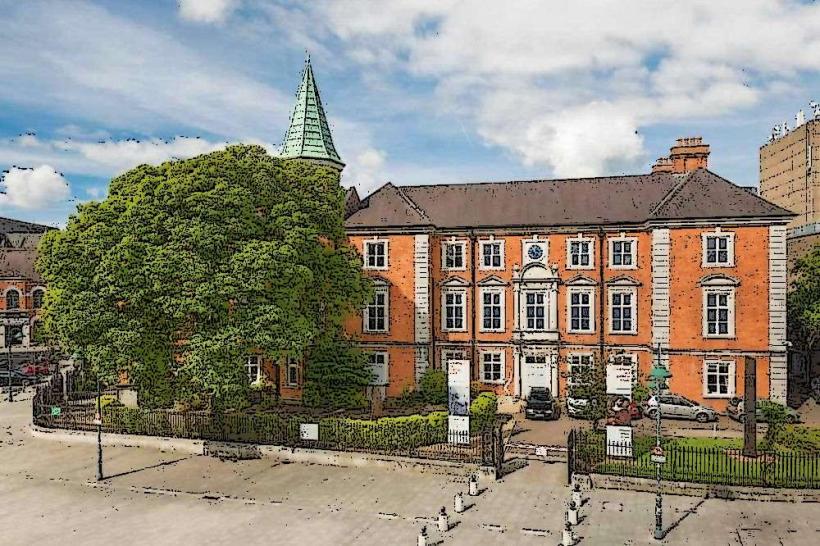Information
Landmark: Cork City GaolCity: Cork
Country: Ireland
Continent: Europe
Cork City Gaol is a historic former prison located in Cork City, Ireland. The gaol, which was in operation from the early 19th century until the mid-20th century, has been preserved and is now a popular tourist attraction, offering visitors a fascinating glimpse into Ireland's past, particularly the harsh realities of prison life and the social conditions of the time.
History and Architecture
Built: Cork City Gaol was constructed between 1824 and 1826, designed by architect William Starkey in the neoclassical style. The gaol was designed to house prisoners in a more humane manner compared to earlier jails, which were overcrowded and poorly ventilated.
Purpose: The prison was originally built to accommodate both male and female prisoners, including convicted criminals, debtors, and political prisoners. It was also intended as a model prison where reformative principles of discipline, work, and silence were implemented. The gaol became known for its high walls, isolated cells, and strict discipline.
Structure: The building features an imposing neoclassical exterior, with a dome and arched windows. Inside, the gaol was designed in the radial plan, a style that features a central hall from which radiating wings extended, each housing individual cells. This design was intended to facilitate surveillance and control over the prisoners. The prison also had a chapel, exercise yard, and workshops.
Expansion: The gaol was expanded in the 1860s, when the prison population grew, and further modifications were made to accommodate more prisoners. Over the years, the prison saw multiple renovations and changes in its functioning.
Closure: Cork City Gaol ceased functioning as a prison in 1923, after which it fell into disrepair. The site was used for various purposes, including as a warehouse. It wasn’t until the 1990s that restoration efforts began, transforming it into a museum.
Role in Irish History
Cork City Gaol has a rich history and has housed many notable prisoners throughout its operation:
Political Prisoners: During the Irish War of Independence and Irish Civil War, the gaol became notorious for holding republican prisoners, including those involved in the struggle for Irish independence from British rule. Notable figures who were imprisoned here include Tomás Mac Curtain, the Lord Mayor of Cork, and Terence MacSwiney, both of whom were prominent in the Irish nationalist movement.
Economic and Social Issues: In its early years, the gaol housed not only criminals but also individuals imprisoned for debt or poverty. At the time, poverty and social unrest were significant problems in Cork, and the prison was a reflection of these harsh economic conditions.
Women and Children: The gaol was unique in that it housed both women and children, a practice not commonly found in many other prisons of the time. It’s known that women were held in separate wings and often worked in domestic tasks, such as laundry and sewing, while children, some as young as seven, were kept in solitary confinement.
Museum and Visitor Experience
Restoration: Since the mid-1990s, Cork City Gaol has been restored to its former glory and is now open to the public as a museum. The restoration has kept the original architectural features intact, providing an authentic atmosphere that allows visitors to step back in time and experience life within the prison.
Exhibitions: The museum houses a range of exhibitions detailing the history of the gaol, the lives of prisoners, and the social and political context of the time. Visitors can learn about the prison's construction, the conditions for inmates, and the notable prisoners who were held there. Exhibitions also cover broader historical events, such as the Irish War of Independence and the Civil War, and the role that the gaol played in these conflicts.
Guided Tours: Guided tours are available for visitors, where expert guides share the history of the gaol and its role in Ireland's turbulent history. The tour includes visits to the prison cells, chapel, exercise yards, and other key areas within the gaol, where guides explain the conditions faced by prisoners.
Interactive Features: The museum features interactive displays that engage visitors, including audio-visual presentations and reenactments, helping to bring the past to life. There are also exhibits that depict the experiences of famous prisoners, including Tomás Mac Curtain and Terence MacSwiney.
Atmosphere: The restored gaol retains much of its historical character, with the dark stone walls, high arched windows, and cold stone floors creating an eerie atmosphere. Many visitors report a sense of solemnity and reflection when touring the site, given its history of hardship and suffering.
Notable Features
The Dome: One of the most striking features of Cork City Gaol is its dome, which is a prominent feature on the building’s exterior. This dome offers a panoramic view of the city and is a focal point of the building’s architectural design.
Prison Cells: Visitors can see the original cells, which were small and sparsely furnished, typically with a wooden cot, a bucket for waste, and minimal lighting. The cells are arranged along corridors that radiate from the central hall, allowing for constant surveillance of prisoners.
Exercise Yard: The prison included an exercise yard, where prisoners were allowed limited time outdoors for physical activity. The stark, enclosed nature of the yard reflects the oppressive conditions faced by inmates.
The Chapel: The prison also housed a small chapel, where inmates could attend religious services. The chapel is an important part of the tour, highlighting the role of religion in prison life during this period.
Memorials: The site includes memorials to the many political prisoners who were incarcerated at Cork City Gaol, especially those who died in hunger strikes or under harsh conditions. The stories of these individuals are an important part of the narrative shared with visitors.
Visiting Cork City Gaol
Location: Cork City Gaol is located just 1.5 kilometers from the city center, making it easily accessible for tourists.
Opening Hours: The gaol is open daily throughout the year, with extended hours during the summer months. It is advisable to check the official website for up-to-date information on opening hours, fees, and tour availability.
Accessibility: The site is fully accessible for visitors with mobility issues, and audio guides are available to enhance the visitor experience.
Parking and Facilities: The gaol provides on-site parking for visitors, and there are gift shops and a café where visitors can relax after their tour.
Conclusion
Cork City Gaol is not just a historic prison; it is a museum that offers profound insights into Ireland’s turbulent history. With its rich past, architectural beauty, and interactive exhibitions, it provides visitors with a deep understanding of the lives of prisoners, the social issues of the time, and the political movements that shaped the country. For anyone interested in Irish history, architecture, or prison reform, Cork City Gaol is a must-see destination in Cork.


